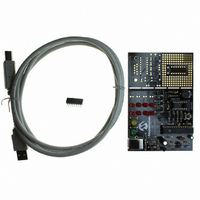DV164101 Microchip Technology, DV164101 Datasheet - Page 49

DV164101
Manufacturer Part Number
DV164101
Description
KIT DEV PICKIT1 FLASH 8/14PIN
Manufacturer
Microchip Technology
Series
PICkit™ 1r
Type
MCUr
Specifications of DV164101
Contents
PIC Kit 1 Circuit Board, CD-ROMs, USB Interface Cable and Booklet
Processor To Be Evaluated
PIC12F675
Interface Type
USB
Silicon Manufacturer
Microchip
Core Architecture
PIC
Core Sub-architecture
PIC12, PIC16
Silicon Core Number
PIC12F, PIC16F
Silicon Family Name
PIC12F6xx, PIC16F6xx
Rohs Compliant
NA
Lead Free Status / RoHS Status
Lead free / RoHS Compliant
For Use With/related Products
Microchip's 8-14 Pin FLASH Microcontrollers
For Use With
AC164122 - BOARD DAUGHT PICTAIL SD/MMC CARDAC164120 - BOARD SIGNAL ANALYSIS PICKIT
Lead Free Status / Rohs Status
Lead free / RoHS Compliant
Other names
DV164101R
DV164101R
DV164101R
Available stocks
Company
Part Number
Manufacturer
Quantity
Price
Company:
Part Number:
DV164101
Manufacturer:
Microchip Technology
Quantity:
135
2004 Microchip Technology Inc.
C.3.2
Reliable, robust software requires debouncing of all mechanical switches. This
includes push buttons of all types, limit switches of all types and even X*Y matrix
keyboards. Matrix keyboards offer a new challenge to debouncing. Keyboards are not
a single line input level but a pattern on several inputs. One pattern represents all keys
released, or the stable state. All other patterns represent keys pressed, or the unstable
states. Reliable keyboards can be designed by debouncing to only the stable state, but
allowing new actions to occur immediately upon a change from one unstable state to
another. The solution is left to the interested student.
C.3.3
There are three switch debounce demos: Debounce, SwchFltr and DbncFltr. The file
name suffix denotes the source code language for each demo. The suffix “.asm”
denotes assembly language. The suffix “.c” denotes C language. Use the Intel 32-bit
hex file output as the input file to the PICkit 1 Flash Starter Kit demo board. Intel hex
files are denoted by the “.hex” file suffix.
C.3.3.1
Debounce is the Brute Force Debounce demo. Each button push in this demo causes
LED D0 to toggle on or off.
Perform the following steps to run the Debounce demo:
1. Connect the USB cable to the USB PC port and to the PICkit 1 Flash Starter Kit
2. Execute the PICkit 1 Flash Starter Kit programming software.
3. From the toolbar menu, select File -> Import Hex . Browse to locate the hex file
4. Click the Write Device button. The status of the program write is displayed in the
5. To run the demo, push the SW1 switch on the board and observe that LED D0
C.3.3.2
SwchFltr is an abbreviation for the Switch Filter Debounce demo. In this demo, LED D1
lights up when SW1 is pushed. When SW1 is released, LED D0 lights up.
Repeat steps 1 through 5 above and load the SwchFltr.hex file to run this demo.
C.3.3.3
DbncFltr is an abbreviation for Debounce Filter. This demo is a combination of the
Debounce and Switch Filter demos. DbncFltr also demonstrates timed expansion of
switch functions. This demo initializes in the Switch Filter mode. Holding the button
down for more than 1 second, while in the Switch Filter mode, causes the demo to
change to the Brute Force method. LED D0 will light as an indication of the change.
Holding the button down for more than 1 second, while in the Brute Force mode,
causes the demo to change to the Switch Filter method. LED D1 will light as an
indication of the change.
Repeat steps 1 through 5 above and load the DbncFltr.hex file to run this demo.
Note:
demo board.
named “Debounce.hex”. Select this file and click the Open button.
status bar located at the bottom of the interface window.
toggles as expected.
DbncFltr DEMO
Applications
Running the Demos
DEBOUNCE DEMO
SwchFltr DEMO
The Program Memory window displays the program code.
DS40051D-page 45












